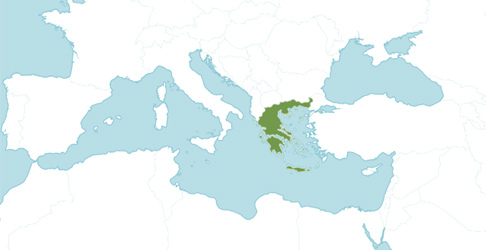
SPECIES DESCRIPTION
SEDUM TRISTRIATUM
Family:- CRASSULACEAE
Common Names:- None
Synonyms:- Helladia tristriata, Oreosedum tristriatum.
Meaning:- Sedum (L) A name used by the Roman naturalist and philosopher
Pliny, reference to the plants habit of ''sitting'' on rocks etc.
Tristriatum (L) With three stripes or ridges.
General description:- Glandular-pubescent perennial, with tufted-like non-flowering
shoots.
Stem:-
1) Flowering stems 2-10 cm, ascending, arising in the axils of the lower leaves of
the rosette.
Leaves:-
1) Rosette, oblong-spathulate, almost flat.
2) Cauline, obovate, semiterete, alternate.
Flowers:-
1) 5(6)-merous, borne in groups of 4-7(-15) in a lax cyme on each flowering shoot.
2) Sepals 1-2 mm, ovate-triangular.
3) Petals narrowly ovate-elliptical, aristate, pale pink with darker stripes, or white.
4) Stamens 10.
Fruit:-
1) Follicles whitish, erect.
Key features:-
1) At least the cauline leaves terete or semi-terete.
2) Peduncles arising from the axils of rosette-leaves.
3) Sepals ovate-triangular.
4) Follicles erect.
Habitat:- Crevices and ledges of limestone cliffs, stony dolines (600-)1100-2300 m.
Distribution:- A Greek endemic originally found by Heldreich in 1846 in Lefka Ori
where it is quite common, also found on Mts Taigetos and Parnonas in the S.
Peloponnisos.
Flowering time:- Apr-June
Photos by:- Steve Lenton
Native to:
Greece, Crete.
Greece, Crete.


GLOBAL DISTRIBUTION

Native